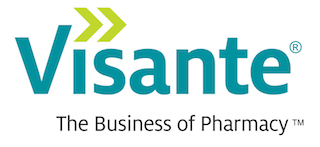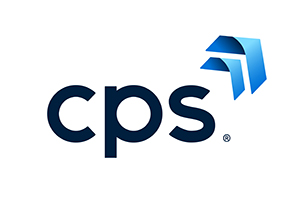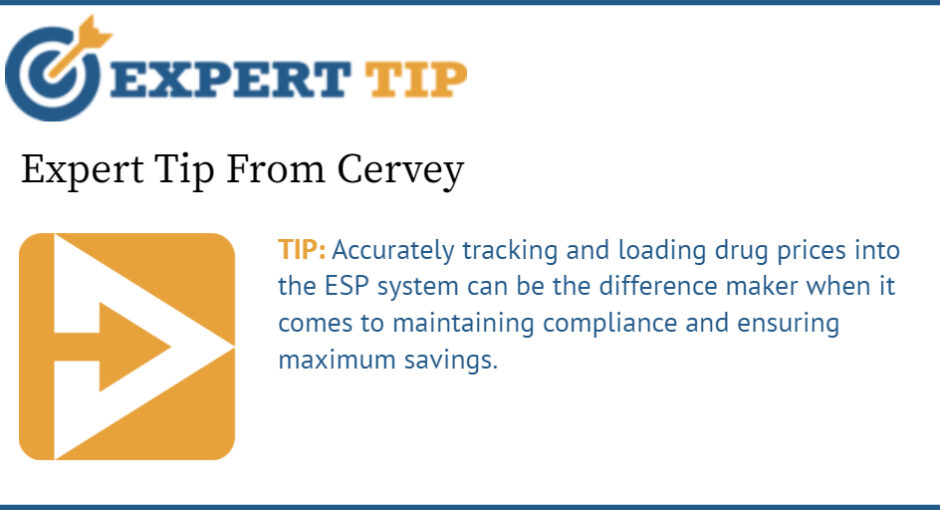
SPONSORED CONTENT

TIP: The key to unlocking the full potential of your program starts with complete understanding of your data.
Having a firm understanding of your data is essential to effectively managing a 340B program, especially for covered entities with smaller teams or just one individual managing the program. The more comfortable and knowledgeable you are with your data, the easier it will be to access and interpret it, allowing you to move more seamlessly through your EMR and TPA, and enabling you to identify any discrepancies or potential issues in real-time. This also adds an extra layer of validation to your accumulators – ensuring your 340B savings are being optimized and utilized at an efficient and appropriate rate.
Other data elements that may be appropriate to monitor include business rules, NPI lists, price files, NDC blocks, and payor blocks. These critical components may seem complex, but they can be instrumental in maintaining a compliant and optimized program.
Familiarity with these data elements can help you better communicate the value of your 340B program to internal and external stakeholders. By having clear, accurate data that demonstrates the impact of the program, covered entities can build trust and support for the program, ultimately leading to its continued success.

Austin Shady is the Senior Director of Client Success at RxStrategies. He can be reached at ashady@rxstrategies.com


SPONSORED CONTENT

TIP: If your entity engages a firm to independently audit your 340B Program, follow through on the auditor’s recommendations in a timely manner.
If you’re working with an outside auditor to examine your entity’s 340B activities annually, they should not be turning over the same findings year after year. Independent auditors are there to help your organization identify risks. It’s up to your team to leverage this expertise to resolve both compliance and administrative deficiencies. Diversion and duplicate discounts are top priorities for HRSA, but they also examine the 340B OPAIS, contract pharmacy service agreements, and wholesaler invoices.
This sounds like a no-brainer, but during my 20-plus years as a 340B compliance expert, I’ve seen HRSA auditors cite entities on findings that could have been resolved prior to the audit—using insights gleaned from the entity’s previously conducted external and internal reviews.

Cheryl Hetland, VP, 340B Program Management at Avita Care Solutions, can be reached at cheryl.hetland@avitacaresolutions.com.


SPONSORED CONTENT

TIP: Don’t forget that in a replenishment model, 340B purchases are primarily made after determining eligibility through accumulated eligibility.
It’s important to understand that 340B purchases are primarily made after 340B eligibility has been determined in a replenishment model. Rather than having a separate inventory of “340B drugs” available to dispense to eligible patients, the 340B covered entity pharmacy pulls medications from an established neutral inventory and fills 340B physician orders. Then, if that drug dispensation passes the required eligibility checks, the pharmacy accumulates future purchases that may be made at 340B pricing. 340B orders are then placed to fulfill accumulated eligibility. Depending on the type of entity, any additional inventory is ordered on a wholesaler acquisition cost (WAC) or group purchasing organization (GPO) account.

Ivy Espendez is Director, 340B Compliance & Audit at The Craneware Group. She can be reached at iespendez@craneware.com


SPONSORED CONTENT

TIP: Make sure you are taking time to review your 340B wholesaler invoices at least weekly to ensure you are getting the correct 340B price.
It is always important for covered entities to be reviewing their wholesaler invoices to ensure accurate 340B pricing is being applied. The entity should be looking to make sure that the 340B price is extended for all NDCs and that they are not being charged Wholesaler Acquisition Cost (WAC) for their 340B purchases. These pricing discrepancies can be caused by a delay in the manufacturer providing 340B contracts to the wholesaler, an administrative error by the wholesaler, or a misinterpretation of data resulting from ESP data submission complexities.
When reviewing wholesaler invoices, covered entities should note incorrect pricing and request a credit and rebill from the wholesaler. An inquiry should be sent to the wholesaler with all original invoice and item-specific information, the estimated 340B amount that should have been charged, and a calculation of the difference.
The volume of pricing discrepancies seen by Hudson Headwaters 340B’s wholesaler pricing verification team is at an all-time high. There are likely many covered entities losing 340B savings through inaccurate pricing being charged erroneously by the wholesalers.

Alex Homkey, Business Development Manager at Hudson Headwaters 340B, can be reached at ahomkey@Hudson340b.com


SPONSORED CONTENT

TIP: When using outsourced telehealth services, be prepared to “Mind the Gap.”
Telehealth services are a great resource for covered entities who want to grow their program’s footprint with minimal investment, allowing them to quickly add patient volume without investing time and money into marketing and provider onboarding. Most tele-specialty services bill covered entities on a per patient basis, constituting a fee upon patient sign-up and a monthly service charge. However, how the tele-specialty vendor defines patient sign-up is key. Often, vendors charge the initial fee as soon as a patient enrolls and has an at-home lab test kit sent to them. However, if the patient does not return the kit or complete a telehealth visit, the covered entity ends up paying the sign-up fee while receiving no 340B benefit.
These “gaps”, either with patients not returning lab kits or completing telehealth visits, must be “minded” to avoid unnecessary costs. Savvy covered entities, or those with super savvy 340B consultants😉, can create patient outreach programs to complement their tele-specialty services. By performing outreach, covered entities assist patients with lab kit questions and remind them to return their kits and to schedule their telehealth visit. Thus, “Minding the Gap”, with a solid patient outreach program, ensures covered entities get the most bang for their buck when contracting with tele-specialty vendors.

Robert Ferraro is Chief Pharmacy Officer at Ravin Consultants. He can be reached at robert@ravinconsultants.com


SPONSORED CONTENT

TIP: When approving your 340B wholesaler invoices for payment, make sure to compare the invoiced amount to your 340B catalog or the ceiling price to ensure you were not overcharged.
The problem: Most covered entities have tens if not hundreds of invoices from multiple wholesalers and distributors on a monthly basis and often pay without ever questioning or verifying the amount charged. Often these invoices go to your accounting department and are approved for payment via the hospital’s or health center’s accounting software. We have seen a lot of instances where those invoices are incorrect (often inadvertently) leading to overpayment by the covered entity. As manufacturer restrictions and the removal of 340B pricing from wholesaler accounts has become more prevalent, we have found this as one of the leading reasons for errors on invoices.
The solution: The covered entity can take steps to mitigate instances of overpayments by 1) understanding each distributors invoicing practices and timeline, 2) implement a process that reviews invoice reports on a regular basis that compares invoice pricing, 3) spot-check invoices. If the CE finds any instances of overpayments then it can report it to the wholesaler and seek remediation options. Additionally, entities are encouraged to report to HRSA instances where the 340B ceiling price is not offered.

Anthony Velasquez, Chief Product Officer at PharmaForce, can be reached avelasquez@thepharmaforce.com


SPONSORED CONTENT

TIP: For any covered entities with a contract pharmacy program, it is critical to review carve-out/ineligible claims data from your TPA system(s) to understand why claims are not qualifying in your 340B program.
Carved-out/ineligible claim data can reveal potential configuration issues or limitations within the TPA system. Examples can include entity-owned pharmacies that have had manufacturer restrictions being applied, prescribers or locations that are 340B eligible but are not configured correctly, excluded payers that should be eligible or claims that were not reprocessed after manufacturer pricing was restored.

Kristin Fox-Smith, Senior Vice President at Visante, can be reached at kfoxsmith@Visanteinc.com


SPONSORED CONTENT

TIP: For sites submitting data to 340B ESP, the option exists within the 340B ESP portal to “Attest” for several manufacturers which will help to enable 340B pricing in advance of receiving any claims for these manufacturers.
To perform the attestation, you must be logged into your 340B ESP portal, and click the Entity Profile option in the menu. The “Make Attestations” button will be available under the following manufacturers: Bausch, Gilead, GSK, Johnson & Johnson, Novo Nordisk, and Sanofi. By clicking the “Make Attestations” button, you are attesting that you will submit transaction data for these manufacturers when the data becomes available. This action can be performed for each covered entity that you have registered in 340B ESP.

Dennis Killian, Senior Consultant – 340B Solutions at CPS, can be reached at: Dennis.Killian@cps.com


SPONSORED CONTENT

TIP: Accurately tracking and loading drug prices into the ESP system can be the difference maker when it comes to maintaining compliance and ensuring maximum savings.
If you’re a covered entity who contracts with outside pharmacies, it’s important to start with the basics. Equip yourself with these tips to troubleshoot any price loading roadblocks you may encounter, and ensure pricing is loaded as quickly and efficiently as possible.
First, if pricing has not been loaded, it may cause a claim to be ineligible when using “winners only” logic. Be sure to send these ineligible claims to 340B ESP so pricing can be loaded. Second, the HIN number can be another problem area to watch out for. The HIN number is required by manufacturers for each contract pharmacy location. If there’s no HIN number, the manufacturer may forgo loading the price.
Lastly, different manufacturers have different policies and load prices based on varying criteria. For example, Eli Lilly and Pfizer claims must be uploaded on a store-by-store basis. Pricing is restored one contract pharmacy location at a time as a claim with one of their NDCs gets uploaded to 340B ESP. Know your manufacturer’s policy to avoid any hiccups!

Larry Crowder, Vice President of 340B Solutions at Cervey, can be reached at lcrowder@cervey.com

*Sign up for news summaries and alerts from 340B Report



